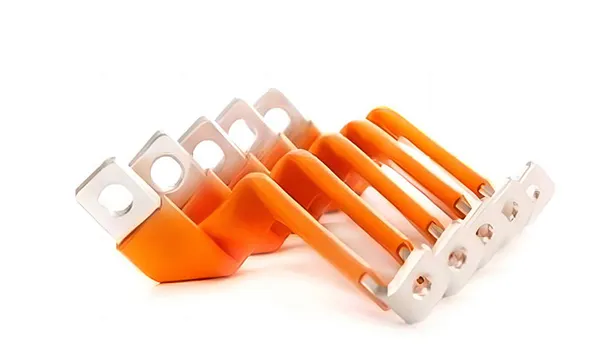In electrical power distribution systems, both cables and busbars play critical roles, but they differ significantly in design, application, and performance. Understanding these differences is essential for selecting the right solution for specific electrical infrastructure needs. This article explores their definitions, materials, applications, and cost considerations, while clarifying scenarios where one is preferred over the other.

Busbars are rigid, flat strips or bars made of highly conductive metals designed to carry and distribute large electrical currents within a confined space. They are often housed in protective enclosures or busway systems and are used for centralized power distribution in industrial, commercial, and high-power environments.Mounted on insulators, busbars connect multiple electrical circuits, providing a low - resistance pathway for electricity flow.
Key Features:
High current capacity: Designed to handle thousands of amperes.
Rigid structure: Fixed in place, often with minimal insulation.
Modularity: Can be combined in parallel to increase capacity.
Cables are flexible insulated conductors composed of one or more stranded or solid wires, surrounded by layers of insulation and protective sheathing.These conductors, usually made of copper or aluminum, are insulated and often protected by additional layers like sheaths and armors. They are used to transmit power or signals over short or long distances, with adaptability to complex routing paths.
Key Features:
Flexibility: Easily bent and routed through tight spaces.
Insulation: Multiple layers (e.g., PVC, XLPE) for safety and environmental protection.
Scalability: Available in various sizes and configurations for diverse loads.
Busbars: Mainly applied in industrial and commercial settings where high electrical currents need to be distributed in a relatively small area. Suited for compact spaces where multiple connections converge.
Cables: Widely used for long - distance power transmission, such as in overhead and underground power lines.Also crucial for communication networks, including telephone, internet, and TV systems.
Busbars: Relatively rigid, require careful planning and installation. Their inability to be easily bent limits their use in applications where flexibility is key.
Cables: Highly flexible, can be easily routed around obstacles, through conduits, and in tight spaces, making them ideal for mobile equipment, automotive wiring, and building wiring.
Busbars: Primarily copper or aluminum bars (low resistance, high conductivity). Minimal insulation; rely on air gaps or non-conductive enclosures for safety.
Cables: Stranded copper/aluminum conductors for flexibility. Multiple layers: insulation (PVC, rubber), shielding, and protective jackets (steel, thermoplastic).
Busbars: Higher initial installation cost due to custom fabrication and enclosures. Lower long-term maintenance costs (durable, corrosion-resistant, and efficient).
Cables: Lower upfront costs for small-scale installations. Higher lifetime costs in high-load scenarios (risk of overheating, wear, and replacement needs).
Opt for Busbars If:
Handling extremely high currents (e.g., industrial plants, data centers).
Space constraints demand a compact, centralized distribution system.
Long-term stability and low energy loss are priorities.
Future expansion is planned (busways can be modularly extended).
Opt for Cables If:
Flexibility is critical (e.g., temporary setups, machinery, or uneven terrain).
Lower current requirements (residential or small commercial loads).
Budget constraints favor simpler, short-term solutions.
Routing paths are complex or require frequent reconfiguration.
Busbars and cables serve distinct purposes in electrical systems. Busbars excel in high-power, fixed installations with efficiency and scalability, while cables offer unmatched versatility for dynamic or lower-load environments. The choice ultimately depends on current demands, spatial constraints, budget, and the need for flexibility. By aligning these factors with the strengths of each solution, engineers can optimize safety, performance, and cost-effectiveness in power distribution design.
GET A QUOTE